Developing Reading Skills for Healthcare Workers.
by Susan Coulter
by Susan Coulter
Baldwin Park Adult and Career Education
Posted March 2020
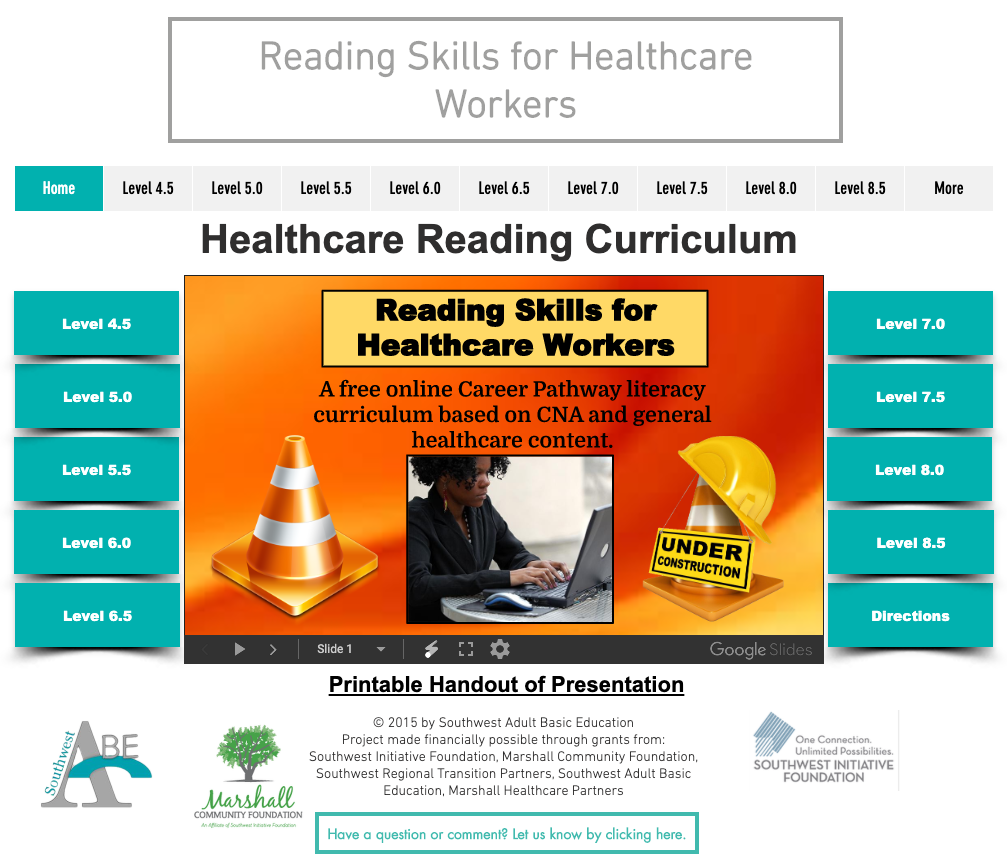
Reading Skills for Healthcare Workers is a free online literacy curriculum based on CNA and general healthcare content. There are over 200 reading selections between grade levels 4.5 and 8.5, and they are focused on developing academic and content vocabulary. For each reading, in the PreQuestions.pdf, there are some questions that help relate the reading selection to the student's previous knowledge base and introduce the vocabulary and definitions. There are three speeds of recorded texts for students to listen to for fluency development. Students chart their reading speed and record it on a graph. PostQuestions.pdf asks comprehension questions about the article and there are also some writing options centered around the selection. Reading for Healthcare Workers is great to use in an Integrated Education and Training (IET) course or prep course for healthcare workers.
If you are familiar with Marshall Adult Education's Reading Skills for Today's Adults website, the format is very similar; however, Marshall is geared to Adult Basic Education (ABE) and goes between 0.7 to 8.0 grade level.
Sample Selections
Each grade level has twenty-five selections all centered around healthcare.
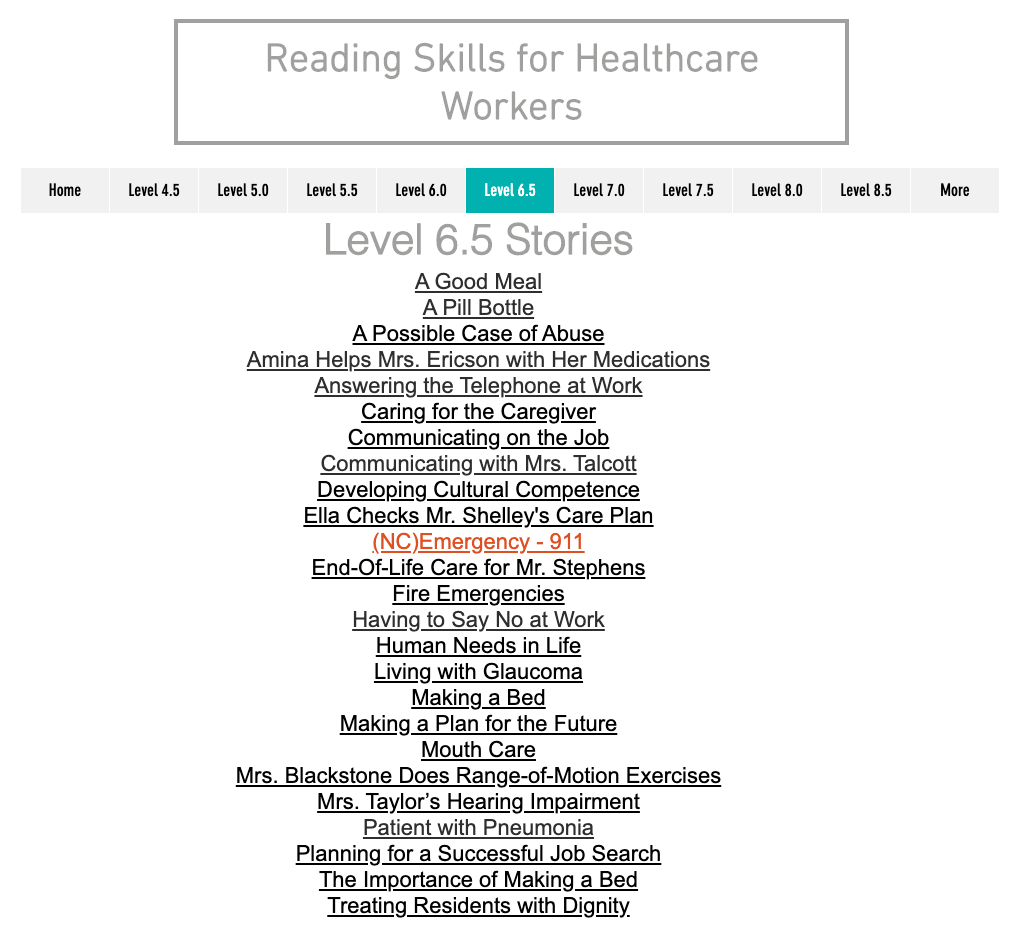
Curriculum
In order to place students in the correct reading level, you will need to give a pretest to students. You can use a student's CASAS Reading test score and then convert the score to grade level by using CASAS Scaled Score References for Grade Levels chart. Assign students to half a year above their current functioning level.
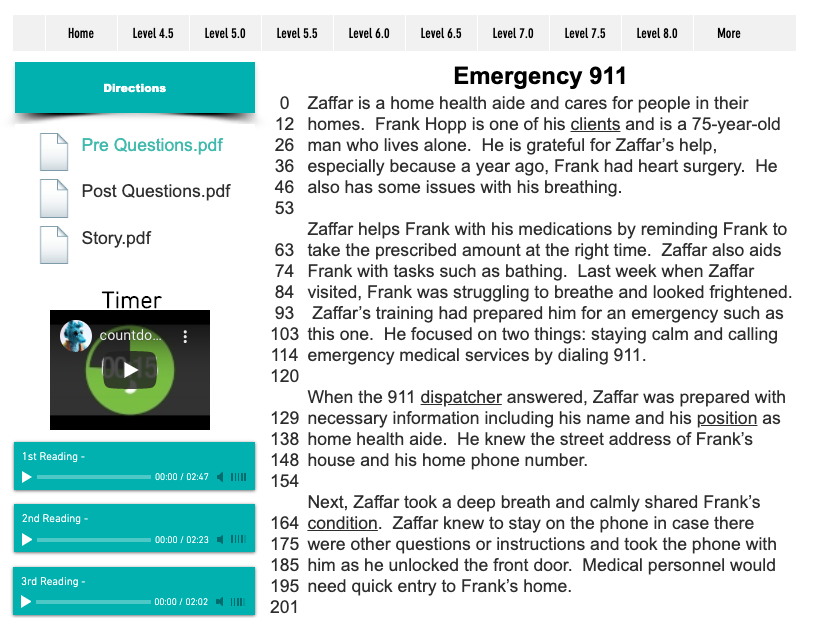
- Pre-Reading Questions and Definitions
There are several different ways to use the Pre-Questions. The easiest is way is to have the students open the document and then answer the questions on paper. Another way is to have students fill in their answers directly on the form and then print the form. Please Note: The document needs to be opened in Adobe Reader in order to print correctly. You can also go paperless by having students fill out the form, save it to the desktop, and then email it to you. Whichever method you use, be sure to demonstrate to your class how you want it completed. Please note: All selections are best viewed in Google Chrome.
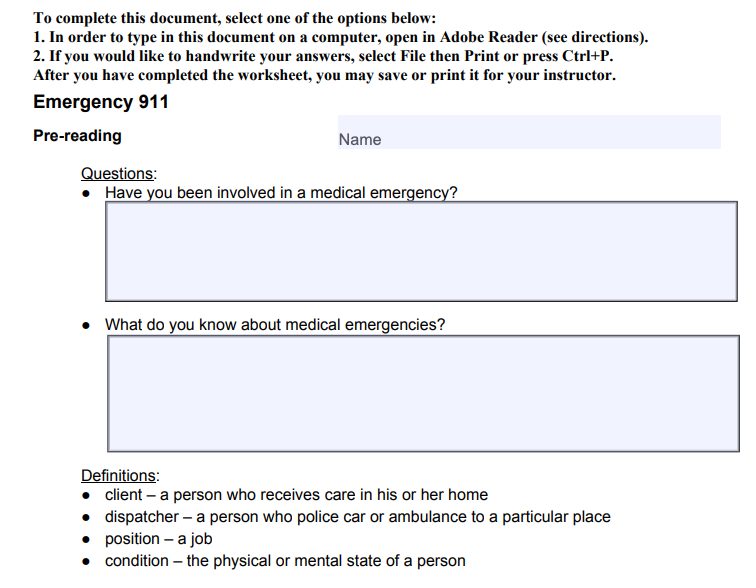
- Timed Reading
Students then take a one-minute timed reading noting the number of words read. You will want to show students how to count the number of words read using the numbers at the beginning of each line. There is a timer embedded on the page; however, it is blocked due to copyright issues. You can have students time themselves with their phones or use a web-based timer. I like to time the class as a whole. Make sure your students write down their reading rate.
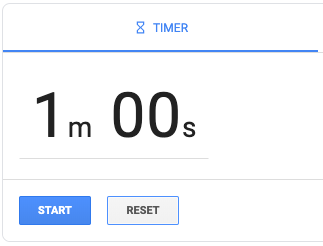
- Graph Word Count
You will need to print a copy of the Word Reading Chart for each student. There are three different charts. Charts are at 165 words, 220 words, and 440 words. Be sure to select a chart that gives your student room to grow.
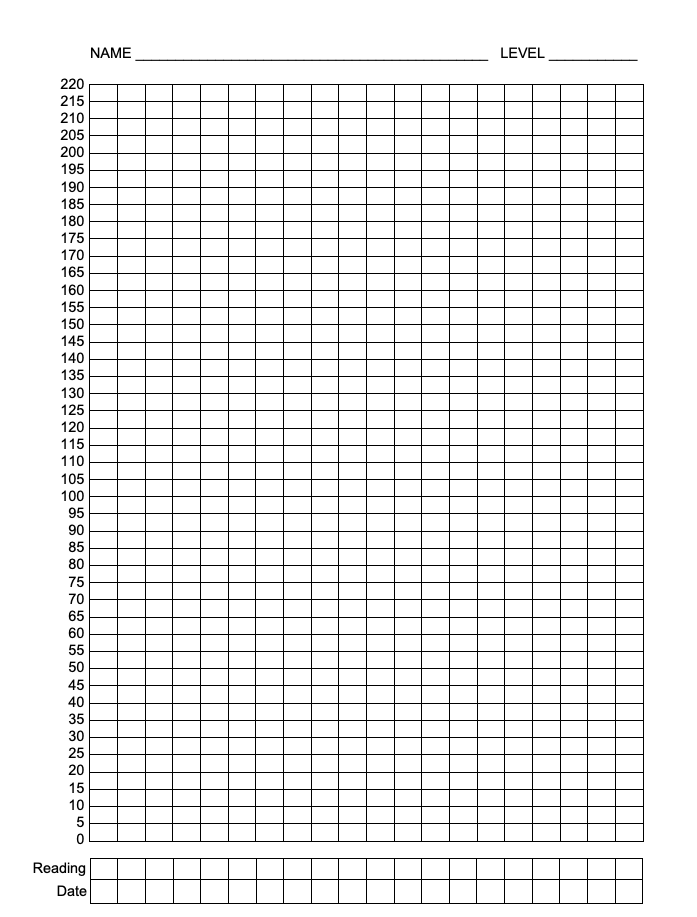
- Practice Reading Out Loud with Recording
There are three practice readings. Each one is a little faster than the one before. The story can also be downloaded and taken home to look up any unfamiliar words and practice reading the selection out loud.
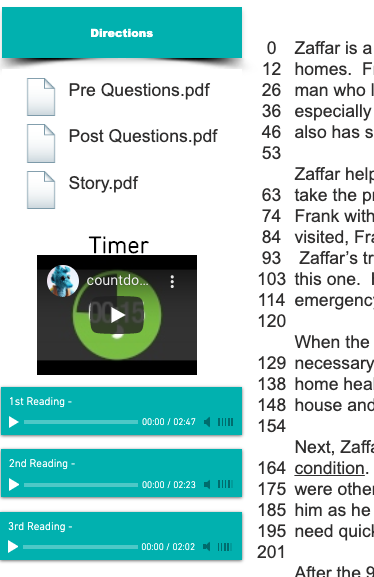
- One Minute Timed Reading
Students take one more timed reading (one-minute) and compare it with their last word count recorded on their graph.
- Record Word Count on Graph
In the next column to the right on graph, students should record their word count.
- Post Reading Questions
There are two parts to the post reading; the comprehension section and the writing section. In the comprehension section, the student is asked questions about the reading and the vocabulary. In the writing section, the student is given two options for a written response. Both the comprehension and the writing section reinforce learning.
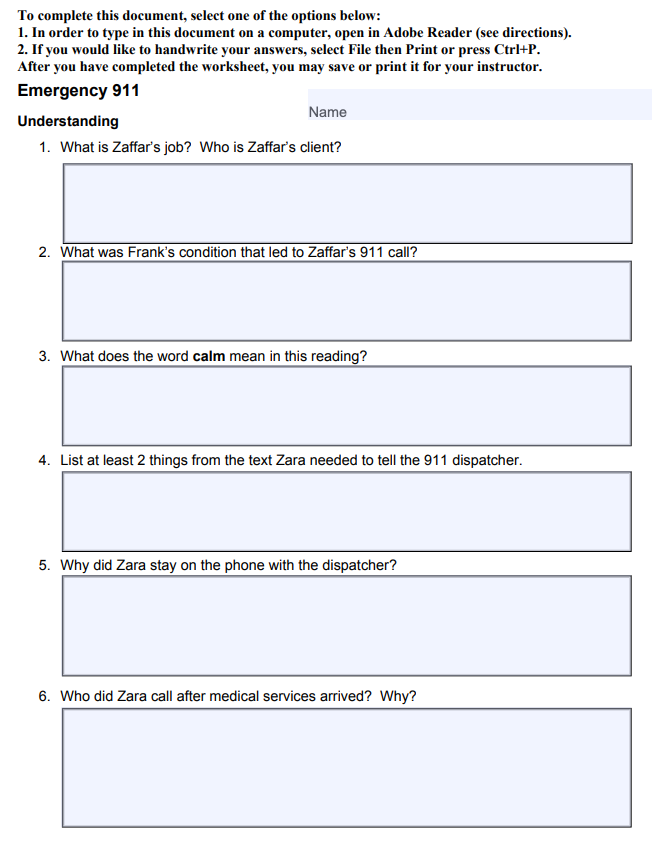

Sample Activity
Preparation:
-
Check Internet connection in your classroom or lab and make sure the site is not blocked at your school. Make sure there are headphones for each student.
-
Determine how you are going to time the one-minute readings. I suggest doing the first few readings altogether as a class. The first time you might want to have the whole class do the same selection.
-
Determine each student's Reading grade level by giving a CASAS or TABE reading test.
-
Determine how you want students to respond to Pre-Questions and Post-Questions.
-
Make copies of the graph.
How-To:
-
Introduce the program and how it will help prepare them for their future as a healthcare worker.
-
Follow steps one through seven above.
-
After a few lessons, be sure to meet with each student and review their progress. Make adjustments as needed.

